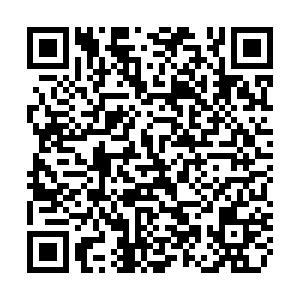Clinical Analysis of Acute Drug-induced Liver Disease in 275 Cases
-
摘要: 目的分析引起急性药物性肝病的常见药物类型、临床及病理特点,以提高对该病的诊断和治疗。方法对从2000年1月~2005年12月根据Maria诊断标准诊断为急性药物性肝病的275例入院病例及其中41例肝活检的临床病理资料进行回顾性分析。结果在急性肝损伤中,药物性肝病所占构成比逐年增加。肝损药物以中草药(占23.3%,64/275例)、抗肿瘤药(15.3%,42/275)、激素类药(13.8%,38/275)、心血管药(10.2%,28/275)、解热镇痛药(8.7%,24/275)为主。主要表现为恶心、纳差(54.8%),乏力(50.2%),黄疸(35.6%),且有27.9%的患者无症状。急性药物性肝病临床类型主要为肝细胞型(48%,132/275例)。多数患者预后良好,治疗后总有效率94.2%。结论临床应重视药物性肝病的预防、诊断和治疗。Abstract: Objective In order to improve the treatment and early diagnosis of acute drug-induced liver disease, we analyzed the causative drugs, clinical manifestation and pathological characteristics of the disease.Methods From January 2000 to December 2005, 275 cases confirmed acute drug-induced liver disease according to Maria Criterion and hospitalized in Zhongshan hospital Fudan university were retrospectively reviewed.Each was examined by drug history, clinical symptom and signs, laboratory tests and therapeutic effect.In 41 cases, hepatic biopsy was carried out to help diagnosis.Results The incidence of acute drug-induced liver disease among all of the acute liver injury was annually increased.The most common drugs which induced acute liver injury were traditional Chinese medicine (23.3%, 64/275cases) , antineoplastics (15.3%, 42/275) , hormones and other immunosuppressant agents (13.8%, 38/275) , antihypertensive drugs and other cardiovascular drugs (10.2%, 28/275) , NSAIDs (8.7%, 24/275) .Hepatocellular injury was the predominant type in these cases (48%, 132cases) .The principal clinical manifestation included nausea (54.8%) , fatigue (50.2%) , jaundice (35.6%) and 27.9% patients had no symptoms.Most patients were cured with good prognosis.The total effect was 94.2% after treatment.Conclusion The clinicians should draw attention to the prevention, diagnosis and therapy of drug-induced liver disease.
-
Key words:
- Drug-induced liver disease /
- Herbs /
- Hepatotoxicity
-
[1]Bilinps SJ, Carter BL.Miberfradil withdram from the market[J].Ann Pharmacother, 1998, 32∶841-847. [2]Vasco A, Maria J, Rui MM.Development and validation of a clinicalscale for the diagnosis of a drug-induced hepatitis[J].Hepatology, 1997, 26 (3) ∶664-669. [3]Beinchou C.Criteria of Drug-induced liver disorders.Report of aninternational consensus meeting[J].J Hepatol, 1990, 11 (2) ∶272-276. [4]刘平.重视中草药的肝损伤问题[J].中华肝脏病杂志, 2004, 12 (4) ∶243-246. [5]Dominique L.Drug-induced liver disease[J].J of Hepatology, 2000, 32 (suppl 1) ∶177-188. [6]Hussain I, Kar P, Husain SA.Antituberculosis drug-induced hep-atitis:risk factors, prevention and management[J].Indian J ExpBiol, 2003, 41 (11) ∶1126-1132. [7]Neil K.Drug-induced liver disorders[J].Drug Safety, 2001, 24 (7) ∶483-490. [8]Larrey D, Vial T, Micaleff A, et al.Hepatitis associated with amoxi-cillin-clavulanic acid combination, report of 15 cases[J].Gut, 1992, 33∶368-371. [9]Hoyumpa AM, Schenker S.Is glucurenidation truly preserved in pa-tients with liver disease?[J].Hepatology, 1991, 13∶786-795. [10]Willis C, Maddrey MD.Drug-induced hepatotoxicity[J].J ClinGastroenterol, 2005, 29∶S83-S89. [11]Speeg KV, Bay MK.Prevention and treatment of drug-inducedliver disease[J].Gastroenterol Clin North Am, 1995, 24 (4) ∶1047-1064. -

 本文二维码
本文二维码
计量
- 文章访问数: 2452
- HTML全文浏览量: 12
- PDF下载量: 883
- 被引次数: 0


 PDF下载 ( 112 KB)
PDF下载 ( 112 KB)

 下载:
下载:

